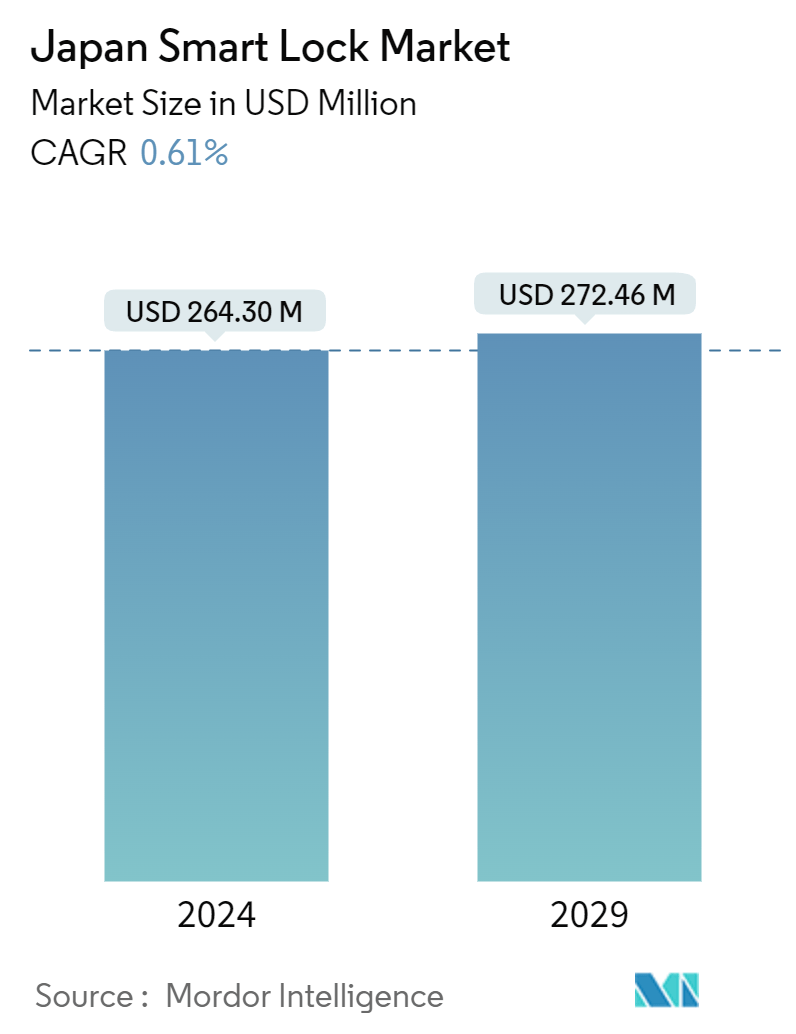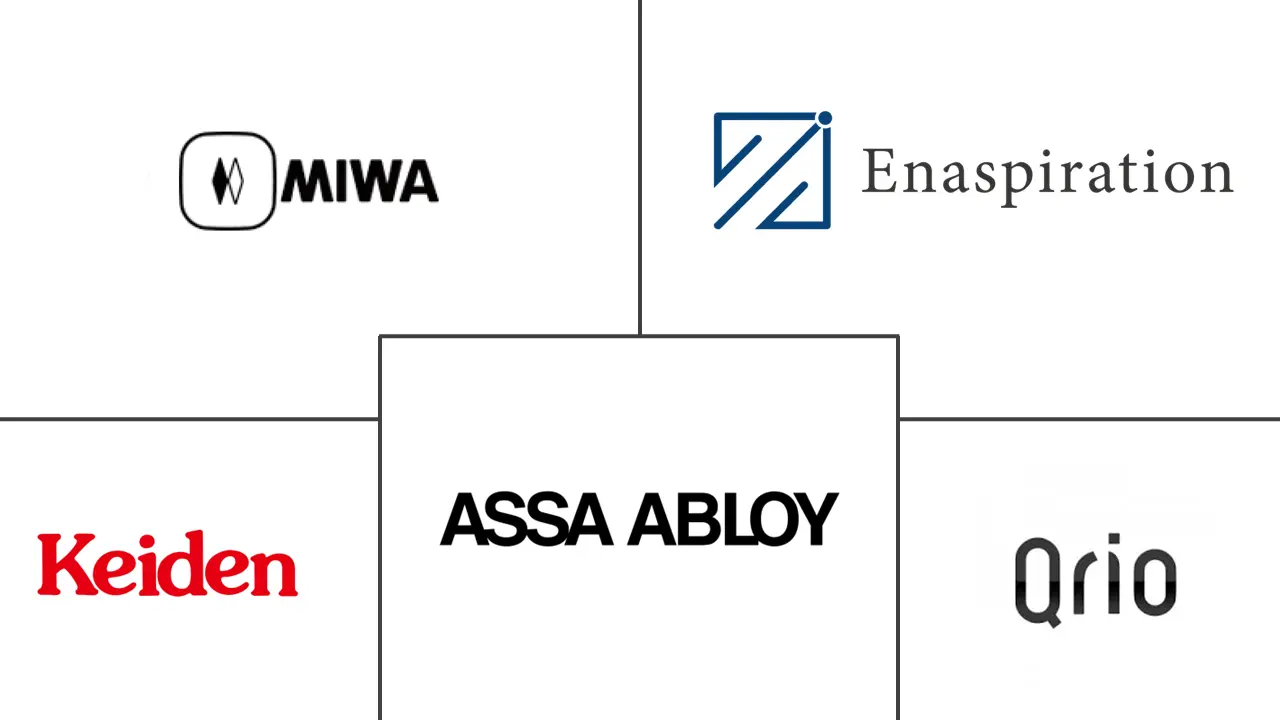Market Size of Japan Smart Lock Industry

| Study Period | 2019 - 2029 |
| Base Year For Estimation | 2023 |
| Market Size (2024) | USD 418.22 Million |
| Market Size (2029) | USD 652.05 Million |
| CAGR (2024 - 2029) | 7.87 % |
| Market Concentration | Low |
Major Players
*Disclaimer: Major Players sorted in no particular order |
Japan Smart Lock Market Analysis
The Japan Smart Lock Market size is estimated at USD 264.30 million in 2024, and is expected to reach USD 272.46 million by 2029, growing at a CAGR of 0.61% during the forecast period (2024-2029).
- Smart locks are the way of the future in Japan for improving security concerns, and there is a robust market for smart locks in the fast-paced country of Japan. Several market vendors are working to integrate smart locks that can lock and unlock house doors, provide temporary access to guests, send notifications when a door is left open, and much more using Wi-Fi, mobile apps, and voice assistants. For instance, Japan's Leopalace company announced that its smart lock-equipped apartment units surpassed the 250,000 mark in fiscal year 2023. This implementation resulted in a savings of around 140,000 work hours. Consequently, the company streamlined its operations, reducing the number of leasing sales offices from 109 to 72.
- Innovations like facial recognition, mobile phone unlocking, iris recognition, and other IoT advancements have emerged as smart lock technologies mature. The expanding functionalities and applications of smart locks are set to diversify even further. This evolution is poised to drive the seamless integration of smart locks into home furnishings. In May 2024, Japanese Enaspiration Inc. unveiled a battery-operated smart lock featuring advanced facial recognition technology. Beyond facial recognition, the smart lock offers application-based unlocking, fingerprint authentication, and traditional PIN access, providing users with multiple convenient ways to unlock their doors.
- Smart locks enable users to grant access to their homes or properties from anywhere, eliminating the need for physical presence. The convenience of remotely managing access codes and monitoring entry logs through smartphone apps enhances security. Additionally, the increasing popularity of advanced security solutions among property managers and homeowners who may need to provide access to guests or maintenance personnel bolsters the market's growth. Government initiatives and investments towards smart buildings are also expected to propel the demand for smart locks in the country.
- Despite various driving forces propelling the smart lock market's growth in Japan, its momentum needs to be improved by vulnerabilities to hacking and a rising tide of cybercrime threats. Cybercriminals, in particular, have set their sights on smart locks. In addition, Japan has a mature market for traditional lock systems with established brands. The cultural preference for conventional and proven systems makes it challenging for new technology to gain widespread acceptance.
- Macroeconomic factors like Japan's energy policies and the cost of electricity can also impact the adoption of smart locks, mainly if the smart locks are seen as adding to the energy consumption of households or businesses. Environmental regulations may also impose additional costs on manufacturers, affecting the affordability of smart locks. In addition, the real estate market in Japan, particularly in urban areas, has challenges, including high property prices and limited new construction. These factors can limit the opportunities for smart lock installations, especially in the residential segment.

